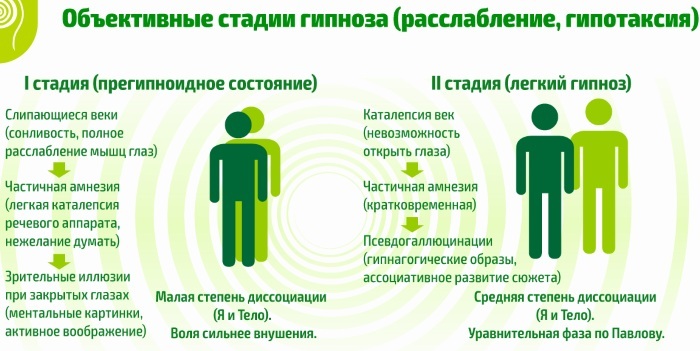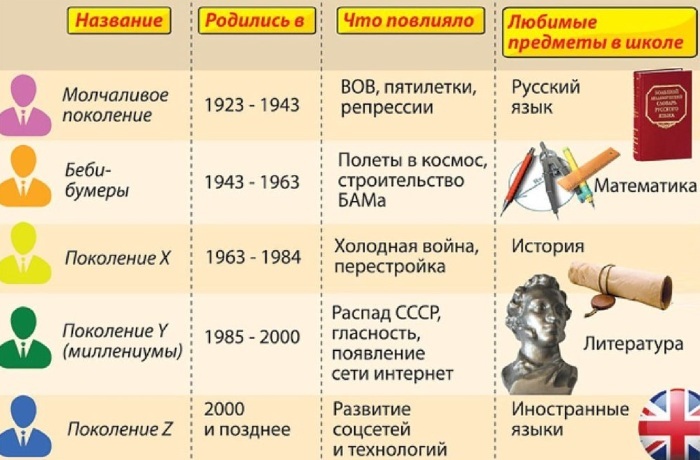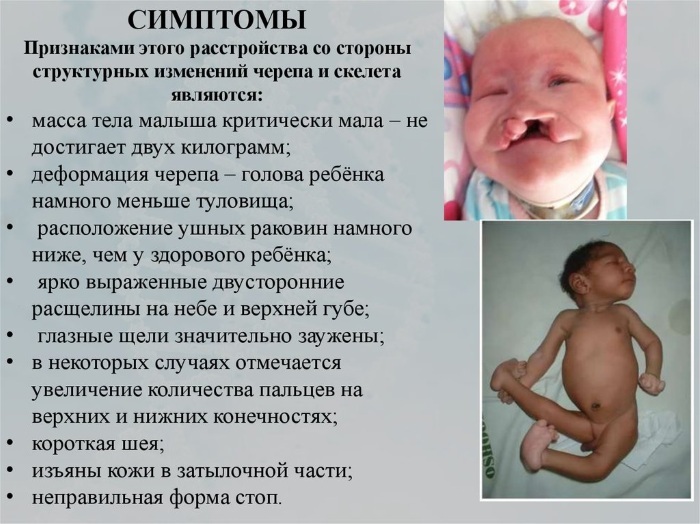Content
- How an ECG is taken
- Reasons for shortening the interval
- PQ interval shortening syndrome
- Symptoms of a shortened PQ interval
- Diagnostics
- Treatment features
- Video about PQ interval on ECG
Shortening PQ is a term used when diagnosis of heart disease using ECG. This phenomenon often appears with the anatomical features of the structure of the cardiac system. It is accompanied by tachycardia and a deterioration in the patient's well-being.
How an ECG is taken
Electrocardiography is one of the irreplaceable methods of monitoring and diagnosing the health of the cardiovascular system. It allows you to identify changes in the work of the entire system and start treatment at the early stages of the onset of pathologies. Diagnostics should be carried out once a year if there are no heart diseases. If there are irregularities in the work of the organ, then the ECG should be done more often to monitor the changes.
The ECG snapshot is a graphical image. On it you can see a curved line that reflects the work of the heart in the process of its work. The curve is based on the electrical fields of the heart. The ECG image can be read by a cardiologist or nurse trained after training in functional diagnostics, which includes electrocardiography.
ECG is done in a specially equipped office, free from unnecessary electrical interference. But depending on the situation, the ECG is done in an ambulance, as well as at the patient's home.
Before sending for an EKG, do not smoke, drink drinks containing caffeine. This includes coffee, black and green tea, energy drinks, and some carbonated drinks. Also, you do not need to eat food before taking the cardiogram.
Before diagnosing, the nurse or doctor describes all the patient's data. It is necessary to inform about the existing diseases or symptoms that have appeared that worsen the state of health. This will help improve the quality of diagnosis and improve the quality of therapy, if needed. The patient should undress to their underwear, women should remove the bra as it will interfere with the attachment of the sensors. The patient lies on a couch, on his back, arms along the body.
The specialist degreases the areas of the patient's skin on which the sensors will be attached. Degreasing is usually carried out with napkins dipped in sodium chloride.
The specialist then attaches the electrodes to the patient's body. They have a specific color and target specific areas of the body. The electrodes are fixed on the forearms, legs, arms, chest. Next, the specialist records the readings that the cardiograph reads. Readings are taken when the patient is breathing calmly.
Reasons for shortening the interval
Shortening the interval does not always indicate the presence of pathology. In some cases, the indicator is one of the options for the norm. Therefore, the doctor should consider not only the decoding of the ECG, but also the complete symptomatic picture of the patient. If there are no complaints and heart diseases, then this indicator should not cause anxiety in the patient. A shortened PQ interval may appear as an indicator of high symptomatic tone.
A shortened PQ on the ECG can be observed while taking certain medications that have a sedative effect. Therefore, it is important to inform the doctor about all drugs that may have been prescribed by another specialist.
Pathological shortening of the interval is manifested in the appearance of indirect conduction pathways. This phenomenon can be the reason for the appearance of tachycardia. Therefore, the doctor must carefully study the entire clinical picture of the patient, having learned all the symptoms that bother him.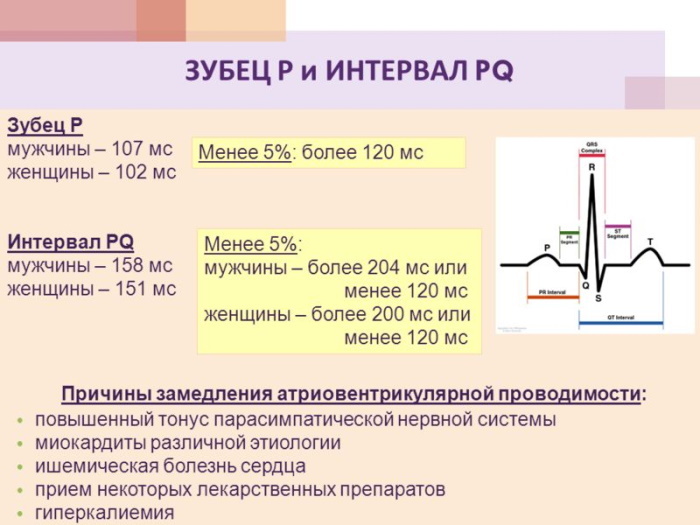
Most likely, in the presence of pathology, the patient will be disturbed by the following symptoms:
- Feeling of constriction in the chest.
- Inability to breathe deeply.
- Heart palpitations.
- Disrupted heart rate, feeling as if the heart is "overturning".
Shortening of the interval is often seen in people who have had myocardial infarction.
PQ interval shortening syndrome
If all the symptoms indicate the presence of pathology, then most likely the patient has a syndrome of shortening the PQ interval. The scientific description of this syndrome was already in 1938. Scientists decoded 200 cardiograms. It should be noted that most of the subjects had a short PQ interval on the cardiogram. But only in 11%, the indicator indicated pathology, in the rest, a short interval was a variant of the norm.
The term PQ interval itself is used exclusively in electrocardiography when decoding images. It shows the time it takes for an electrical impulse from the transducer to travel from the atria to the ventricles. Thus, it is possible to evaluate the operation of the "switch" that transmits the excitation over a given section.
Without the absence of pathologies, an electrical impulse causes the heart to contract, arising in the sinus node. Then it passes through the conducting system to the atrioventricular node. There, the impulse is delayed until the moment of atrial contraction. Then he gets into the bundle of His. From there, the impulse goes directly to the ventricles. In the syndrome between the bundle of His sinus node, there is an additional bundle. In this case, the impulse bypasses the atrioventricular node and reaches the ventricles without stopping.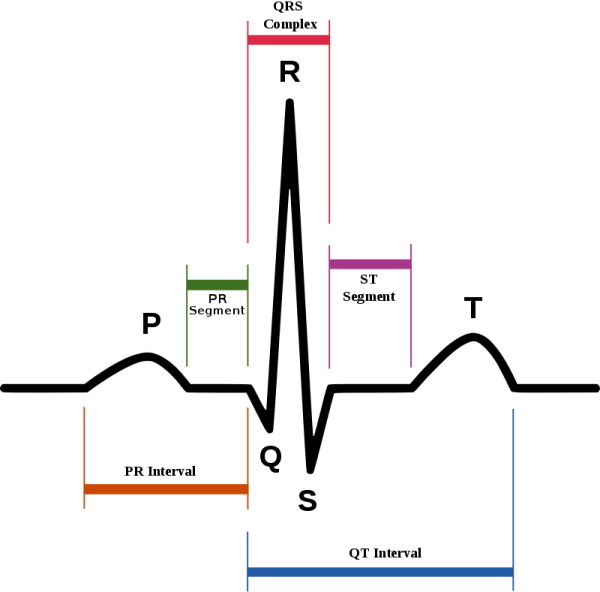
Normally, this PQ indicator is from 0.11 to 0.2 seconds.
Shortening of the PQ interval indicates too rapid arousal. The impulse reaches the ventricles too often. This can be seen on the ECG.
This phenomenon is due to the formation of additional beams of pulse transmission. Through them, an additional discharge of impulses to the ventricles occurs. It turns out that the impulse passes in a normal rhythm, as it is physiologically arranged. It turns out 60-80 pulses per minute. And also an additional impulse passes to the ventricles - already pathological. It goes through additional beams.
There may be more than one pathological bundle. Each of the beams has its own name, which comes from the names of the scientists who discovered them. Jame's tufts are characteristic of shortened interval syndrome. The Maheim and Kent bundles are characteristic of the syndrome of an increase in this interval. James' bundle is part of the atrioventricular node. First, the node itself is stimulated, and then the impulse reaches the ventricles.
The throughput of this node allows some of the impulses to return from the ventricles through the James bundle back to the atria. This phenomenon is the reason for the occurrence of tachycardia in patients.
Seeing the doctor's conclusion, you can find 2 similar, at first glance, terms. One is called short PQ syndrome and the other is called a phenomenon.
The phenomenon suggests that the ECG showed signs of a shortening of the interval. But after examining the patient's entire symptomatic chart, the doctor concluded that the phenomenon does not pose a health hazard and is an indicator of the norm. The phenomenon of a shortening of the PQ interval can be seen in the conclusion of a doctor by a patient who regularly visits a cardiologist, leads a healthy lifestyle, and has no characteristic symptoms.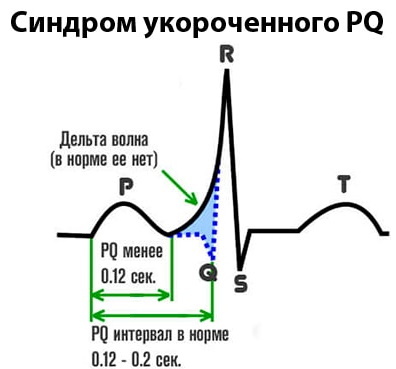
PQ shortening on the ECG is a condition when the readings are accompanied by characteristic symptoms, patient complaints. Most often he is worried about tachycardia. In rare cases, in the absence of timely diagnosis and treatment, it can cause cardiac death. In this case, the doctor makes a diagnosis - shortening syndrome.
Without the formed additional beams, it is impossible to diagnose the syndrome of the shortening of the PQ indicator. James beams are formed during the period of intrauterine development of the fetus.
The syndrome of shortening the interval is also recorded in children, starting from the infancy. But there are not always concomitant symptoms, so the presence of the syndrome can only be seen on an ECG image.
Symptoms of a shortened PQ interval
The table below lists the diseases and factors that can, in rare cases, become a provocateur of the syndrome.
| Disease | Factor |
| Heart attack | Stressful situation, due to which there is a great emotional stress. |
| Thickening of the wall of the left, right ventricles. | Unusual sharp physical activity. |
| Inflammation of the heart muscle is a disease when the pathology is provoked by an infection, allergy, and toxic effects. | A visit to the bathhouse, hamam, sauna. Or, conversely, immersion in ice water. |
| Pathological increase in pressure - hypertension. A condition where high blood pressure can be dangerous to human life. | A sharp change in temperature. |
| Increased pressure inside the abdomen. It appears during bouts of severe coughing, heavy lifting, labor pains. | — |
| Eating large amounts of food. | — |
| Drinking liquid that is either too hot or too cold. | — |
| Taking sedatives. | — |
PQ shortening on the ECG and symptoms can occur at any age. The disease may not show signs for many years. Also, during an ECG, a phenomenon may appear that is also not accompanied by symptoms.
The main symptom of the syndrome is tachycardia. It manifests itself in small seizures that last 15-20 seconds. They appear unexpectedly and also end.
 What other symptoms of the syndrome of shortening of the interval can be:
What other symptoms of the syndrome of shortening of the interval can be:
- Hard breath; a feeling of squeezing in the chest.
- Strengthening the pulse; the rhythm of the heartbeat is disturbed; there is a feeling that the heart is “turning over”.
- The attack begins suddenly.
- Weakness, a sharp feeling of fatigue.
- Increased perspiration.
- Throws in cold or heat.
- The skin turns pale.
- The limbs get cold.
- Psychological manifestations: increased anxiety, panic attacks, fear of dying.
If one or more symptoms are noticed, then it is necessary to urgently consult a doctor for further diagnosis and correct diagnosis.
Diagnostics
The main method of diagnosis is an electrocardiogram.
When conducting a study, the doctor evaluates the following factors:
- Pulse in 1 min. Normally, it is 60-80 strokes. A symptom of the syndrome is a pulse in the range of 120 to 200 beats at rest.
- The pulse transit time is less than 0.11 sec.
- The ventricular complex is normal with supraventricular tachycardia. And with the ventricular, they expand.
- The sinus rhythm with supraventricular therapy is correct.
When diagnosing a syndrome, the doctor prescribes additional studies that will help detect other heart pathologies in time, if any.
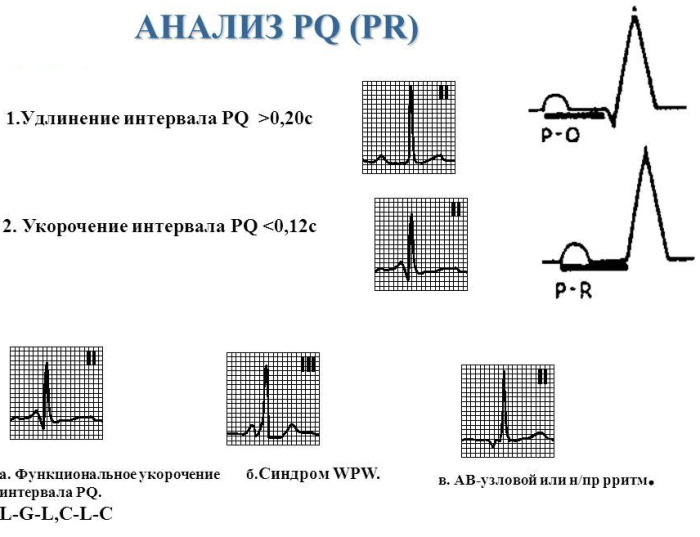
What additional research is being conducted:
- Magnetocardiography. The study is carried out to assess the work of the heart muscles.
- Bicycle ergometry. ECG type, but a study is carried out after exercise.
- Ultrasound of the heart.
Treatment features
At the first appearance of symptoms of the syndrome, you can provide first aid, which will help reduce the attack:
- Breathing exercises. First take a deep breath, hold your breath a little, exhale slowly. Repeat several times. Exercising will help normalize your heart rate.
- Gentle massage of the eyeballs.
- Massage the area where the branching of the carotid artery occurs. It will help normalize heart function.
- Washing with cool water.
PQ shortening on an ECG without symptomatology as a phenomenon does not require treatment.
The doctor will give some recommendations that will help keep the heart system in good shape and keep it healthy:
- Regular visits to the cardiologist. Adults need to be examined 1 time in 12 months, children - 1 time in 6 months. The examination includes an ECG and a consultation with a cardiologist. The doctor may additionally prescribe other examinations.
- Regular physical activity. This includes a healthy nutritious diet, which includes all groups of elements, in the presence of deficiencies of vitamins and minerals intake of dietary supplements is prescribed, active time spent (sports, walking at least 10,000 steps per day), regular being in the fresh air.
- Control over your condition. If the symptoms described above appear, it is worth contacting a doctor unscheduled.
With a diagnosed syndrome of shortening the interval, the doctor prescribes drug treatment. It will help reduce the frequency of seizures.
What drugs the doctor prescribes for short interval PQ syndrome:
| A drug | For what |
| Propafenone | It is prescribed for a violation of the heart rhythm. |
| Verapamil | It is also used to restore a clear heart rate. This drug is often used by emergency doctors for a sudden attack in a patient.
|
| Adenosine | The drug slows down the conduction of the atrioventricular node. |
| Amiodarone | Arrhythmia treatment. |
| Flecainide | Increases the period of "rest" of the ventricles |
| Sotanol | Decreases heart rate |
| Any drugs for vasodilation | — |
Each of the listed medicines is used only as directed by a doctor. They are shown in the table for reference. Self-medication can cause significant harm and deterioration.
If there is a severe course of the disease, drug therapy does not bring significant results, there is an increase in seizures, then surgery is performed. Also, the presence of sudden deaths in the family is a weighty argument for the operation.
What kind of surgical intervention can be:
- Radiofrequency ablation. In this way, cardiac arrhythmias are treated. Using radio frequencies, laser or current, the surgeon acts on the beams of James.
- Laser destruction. During the operation, the surgeon acts on James's beams with liquid nitrogen.
The decision about surgery is made by the attending cardiologist. Also, in case of illness, constant pacing is possible. This type of treatment is used if the patient has frequent bouts of tachycardia. Also, when treating the syndrome, the doctor issues recommendations regarding lifestyle. This also includes a balanced diet, filling all deficiencies, reducing stress levels, and avoiding saunas and baths.
In the presence of heart pathologies, heavy sports are prohibited, but this does not mean that all activity must be removed. Regular exercise is necessary to maintain health, but it should be moderate. Walking in the fresh air, exercise therapy, morning exercises, yoga are useful. Meditation is ideal for normalizing your heart rate and reducing stress levels. Heavy sports include hockey, rugby, football, figure skating. There are cases of sudden death in patients with shortening of the interval syndrome during matches and competitions.
What other preventive measures can be taken with a diagnosed syndrome:
- If there is excess weight, then get rid of it. A properly selected diet with a small calorie deficit, as well as moderate physical activity, will help.
- Refusal to drink alcohol, as it can provoke attacks of tachycardia.
- Compliance with sleep patterns. Healthy sleep is 8 to 10 hours. You also need to go to night sleep before 23:00. A couple of hours before bedtime, you need to stop using the phone and watching TV. This will help regulate the production of melatonin.
An ECG is a mandatory procedure that must be regularly seen by a doctor. Having PQ shortening syndrome is not a death sentence. Mortality rates from this diagnosis are very low. But the timeliness of the diagnosis, possible drug treatment and maintaining a healthy lifestyle are important.
Video about PQ interval on ECG
Sudden death factor - shortened PQ interval:

